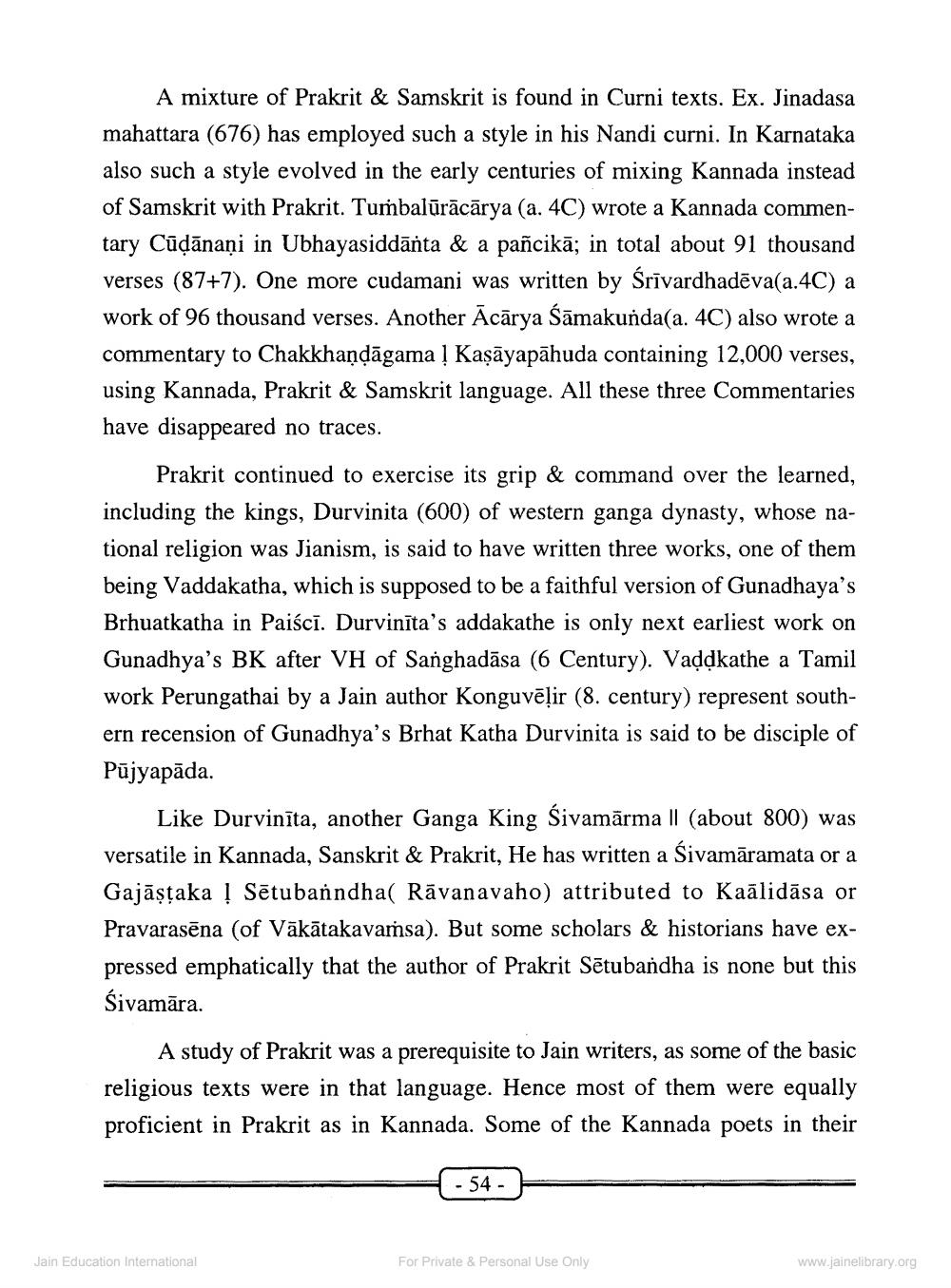________________
A mixture of Prakrit & Samskrit is found in Curni texts. Ex. Jinadasa mahattara (676) has employed such a style in his Nandi curni. In Karnataka also such a style evolved in the early centuries of mixing Kannada instead of Samskrit with Prakrit. Tumbalūrācārya (a. 4C) wrote a Kannada commentary Cūļānani in Ubhayasiddānta & a pañcikā; in total about 91 thousand verses (87+7). One more cudamani was written by Śrīvardhadēva(a.4C) a work of 96 thousand verses. Another Ācārya Śāmakunda(a. 4C) also wrote a commentary to Chakkhandāgama | Kaşāyapāhuda containing 12,000 verses, using Kannada, Prakrit & Samskrit language. All these three Commentaries have disappeared no traces.
Prakrit continued to exercise its grip & command over the learned, including the kings, Durvinita (600) of western ganga dynasty, whose national religion was Jianism, is said to have written three works, one of them being Vaddakatha, which is supposed to be a faithful version of Gunadhaya's Brhuatkatha in Paiścī. Durvinīta's addakathe is only next earliest work on Gunadhya's BK after VH of Sanghadāsa (6 Century). Vaddkathe a Tamil work Perungathai by a Jain author Konguvēļir (8. century) represent southern recension of Gunadhya's Brhat Katha Durvinita is said to be disciple of Pujyapāda.
Like Durvinīta, another Ganga King Śivamārma II (about 800) was versatile in Kannada, Sanskrit & Prakrit, He has written a Sivamāramata or a Gajāșțaka ! Sētubanndha( Rāvanavaho) attributed to Kaālidāsa or Pravarasēna (of Vākātakavamsa). But some scholars & historians have expressed emphatically that the author of Prakrit Sētubandha is none but this Śivamāra.
A study of Prakrit was a prerequisite to Jain writers, as some of the basic religious texts were in that language. Hence most of them were equally proficient in Prakrit as in Kannada. Some of the Kannada poets in their
- 54 -
Jain Education International
For Private & Personal Use Only
www.jainelibrary.org




